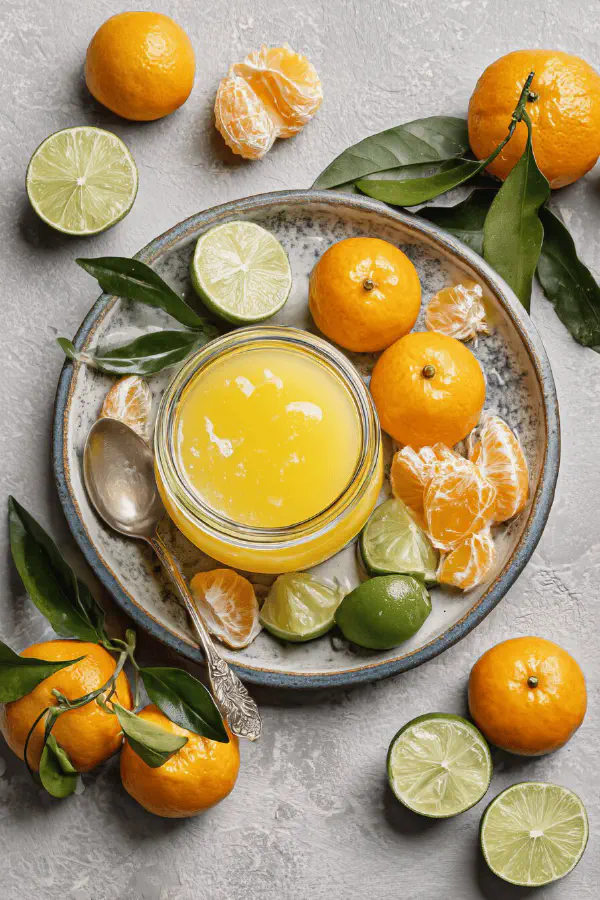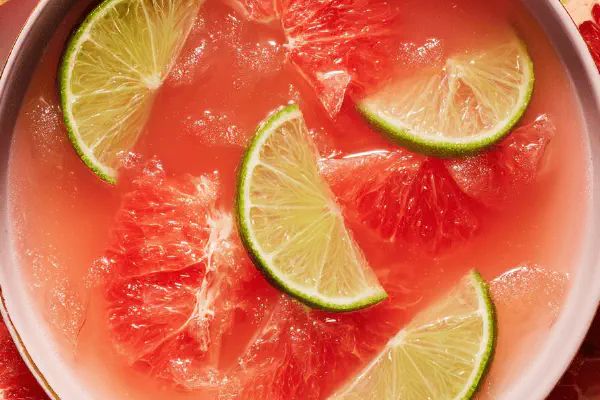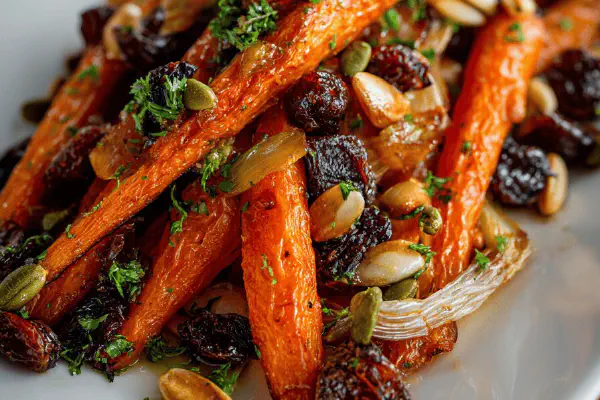Featured Recipe
Citrus Syrup Remix

By Kate
"
A citrus syrup with a twist of lime and mandarin juice replaces original oranges and grapefruit. Sugar reduced slightly, simmered until bubbling thickened slightly. Zest blend swapped to lemon and mandarin for sharper aroma. Strain for clarity. Store cooled syrup airtight. Keeps up to 4 weeks refrigerated. Bright citrus notes, balanced sweetness, ideal for drinks or drizzling. Practical sugar level for viscosity. Easy home pantry ingredients. Vegan. Allergy-friendly.
"
Prep:
12 min
Cook:
18 min
Total:
30 min
Serves:
375 ml 1 ½ cups
syrup
citrus
vegan
homemade
French-inspired
Introduction
Juices swapping on a whim. Less sugar pressure but still sweet enough to balance acid. Citrus zest changes everything; lemon and mandarin bring sharp, bright scent. Slow simmer—not a rolling boil, or sugar scorches. Tiny bubbles, edges flicker. When syrup clings and drips slowly, you know it’s ready. That zing of lime cuts the syrup’s sticky heaviness. Strain well or risk bitter bits forcing the tongue’s cringe. Store chilled tight; syrup ages well but won’t last forever. In drinks, drizzle, or baking—boost bright flavors easily. Simple pantry staples turned vibrant. Watch out—not all citrus zests are interchangeable; bitter pith ruins, pick thin peels.
Ingredients
About the ingredients
Reducing sugar to 150g keeps syrup from crystallizing while still holding viscosity. Mandarin juice trades smoother sweetness for original orange; lime juice ups sharp notes replacing grapefruits. Lemon juice brings brightness and acidity balance. Fresh juice best, but bottled juice acceptable if unsweetened. Choose organic or unwaxed citrus for zest—avoid pith since it’s bitter. Zest blend here switches to mandarin and lemon, sharpening aroma to complement tartness. Common issues: syrup overcooks, becomes grainy. Stir intermittently but avoid boiling aggressively. Use fine mesh for straining; regular colanders leave pulp bits. No dairy, nuts, gluten—safe for allergy-friendly environments. Keep airtight to preserve freshness, because citrus syrups absorb fridge odors quickly.
Method
Technique Tips
Start over medium heat; enough to melt sugar evenly into juices. Stir sparingly at beginning to combine not after syrup forms—avoids crystallization. Watch tiny bubbles forming around pan’s edge as signal for simmer, not rolling boil which burns sugars. Keep heat balanced. Simmer 7-8 minutes; syrup slightly thickens. Not a jam stage, but check by running a spoon; syrup should coat but drip slowly without running watery. Off heat, let it cool a bit to avoid excess evaporation risking thickening too far. Strain diligently—zest removal crucial, leftover pith makes syrup bitter, gritty. Pour into clean container immediately, let cool uncovered briefly so condensation doesn’t water down syrup. Refrigerate sealed once cooled. Use within a month, shake before use if separated. If syrup thickens too much over time, warm slightly to loosen.
Chef's Notes
- 💡 Start mixing sugar and citrus juices. Use fresh juices when possible. Bottled okay if unsweetened. Watch heat closely. Don't let it boil hard—sugar burns.
- 💡 Strain well afterwards. Fine mesh is a must. Remove all zest and sediment. Don't rush this. Gritty bits ruin the texture. Let syrup cool enough before sealing.
- 💡 Check for viscosity. Should coat the spoon evenly. If it is too thick, add a splash of water, reheat gently. Thinning out can save a batch.
- 💡 Store properly. Airtight rigid container is best. Refrigerate after cooling. Consume within four weeks for optimal taste. Syrup absorbs fridge odors.
- 💡 Tip on zests—pick only thin peels. Avoid bitter pith. Use quality citrus. Zest enhances aroma. It'll change a whole batch of syrup.
Kitchen Wisdom
What to watch for while cooking syrup?
Look for tiny bubbles at edges. Don't let it roll hard. That's burning. Stir sparingly, focus on simmer, not boil.
How to fix a too-thick syrup?
Thin with a bit of water, reheat gently. Or, use in baking as is. Adjust based on what you're making.
Can I use other juices?
Yes, but keep the citrus balance. Avoid bitter mixes. Juices with acid work best. Taste before finalizing.
How to store syrup long term?
Airtight container in fridge, that’s key. Can freeze too—use ice cube trays. Pull out as needed for drinks.



